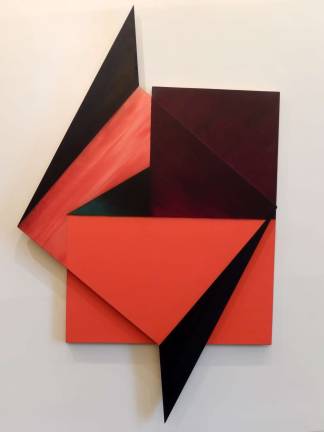Scratching the Surface at the National Academy Museum





How can it be a secret if it’s got flags hanging from the front inviting visitors in? How an almost 200-year-old institution, fashionably housed on one of the most visited stretches of street in the world, be a secret? How can it be a secret if some of the most successful, notable artists and architects in the country are counted among its members?
The National Academy Museum isn’t a secret, but neither is it a household name nor is it on most tourists’ or even New Yorkers’ must-see lists. It should be, and there’s never been a better time to visit. Just a half block north of the Guggenheim, and another half block south of the Cooper Hewitt, the National Academy Museum is currently showing “The Depth of the Surface,” its Annual for 2015. Each year, the Annual exhibition showcases a variety of work by Academicians, highlighting the riches of its membership. And what a membership it boasts.
Before making your way to the galleries to see the superb pieces of contemporary art that fill three floors of this elegant townhouse, stop just inside the front door and look up. There, inscribed in the ceiling, are the names of all the artists and architects who’ve been elected as members of the Academy, organized by year. It’s a who’s who of 19th, 20th and 21st century art and design. You’ll find John Singer Sargent, invited in 1897; Frank Lloyd Wright, from 1952; Helen Frankenthaler, inducted in 1994; and Ed Ruscha, a member of the class of 2014. That’s when it hits you—why haven’t I been coming here for years? Well, it’s never too late.
“The Depth of the Surface” presents recent works, many done in 2015, some specifically for the exhibition, by some 70 artists and architects. Members of the Academy may only exhibit once every three years. This year’s roster is filled with creators of varying renown, but consistent skill.
The exhibition, organizers state, “seeks to delve beneath the surface of the work included to reveal its true meaning and message.” It’s a loosely constructed criterion. Every work of art worth seeing should have both surface and depth, as do all in this exhibition. But one doesn’t come away with an overall sense of the surface quality of the works, though some are unique, like Jane Dickson’s “Green Tunnel” painted on AstroTurf and Lynda Benglis’ bright pink abstract sculptural form, “Swinburne, Figure1.”
The real feeling you come away with here is that this is an incredible selection of compelling works by a great cross-section of contemporary artists that rivals anything else you’ll find on Museum Mile. On top of that, it’s a treasure trove of discovery.
Included in the show are accomplished individuals of great renown, like Dorothea Rockburne, represented by an elegant, shaped canvas in red and black, and Eric Fischl, whose two enormous, evocative paintings flank the entrance. There are Alice Aycock’s lyrical, expansive drawing “Murmuration 4,” architectural renderings by Cesar Pelli and a classic Philip Pearlstein painting, “Model with Two whirligigs” (one, a particularly menacing duck). But there are also dozens of artists whose work may not be known to visitors although they’re just as accomplished and equally recognized by the National Academy. Seeing them presented side-by-side is eye-opening.
Janet Fish’s style is instantly recognizable in her rainbow-hued, tour-de-force, “Phoenix Kite.” Nearby hangs Lois Dodd’s 2013 quiet, sensitive painting, “Tree and Shadow” done when the artist was in her mid-80s. It’s fascinating to see how two paintings by two women, about a decade apart in age, sharing the same medium, sing in such divergent yet harmonious voices.
Shahzia Sikander’s “Gold Oasis” video is perfectly situated in an elegantly carved architectural niche, as though the two were built for each other—old meets new, stately meets state-of-the-art. Its accompanying music, created by Nas and Damian Marley, fills the space with upbeat, ethereal sound. It’s the beauty of the work that draws the viewer, the knowledge that it’s in response to the Ebola outbreak that causes one to stop and reflect.
Simon Dinnerstein’s monumental pencil drawing with the marvelous title “Can the Universe be Held in the Gaze of a Small Dog,” took over three years to complete. The artist had to stand on a table to draw the wall-sized work. The charm of the image beckons; its technical virtuosity is arresting.
Joel Shapiro’s installation, “Six,” from 2015, fills a gallery with line and color. Stepping into the space gives the sense that you’ve walked into a classic constructivist painting by Malevich and are seeing it from the inside. It’s a unique and delightful experience.
“The Depth of the Surface” is filled with surprising and wonderful works of art. The National Academy Museum is extremely visitor friendly, and offers a welcoming atmosphere and blissfully uncrowded galleries in a gorgeous Beaux Arts-style mansion. If it weren’t so prominently located and so easy to find and get to, it could be a hidden gem. Through August 23rd, it’s presenting works as good as anything else you’ll find on the walls of its more famous neighbors.